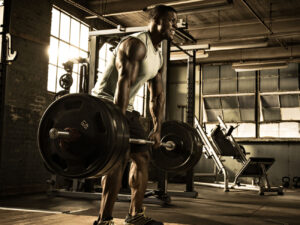Athletic Trainer’s Corner- April 2019

3 KEYS TO RECOVERY
When it comes to recovery, there’s a lot to discuss: cool downs, chocolate milk, stretching, foam rollers, sleep, and the dreaded ice baths. But even with all this talk about recovery, rarely is something actually done.
Recovery is not just for the pros. Young athletes need it just as much as adults. Not only are they still growing and developing, but many child and adolescent athletes are participating in more organized and recreational sports than just soccer.1 Whether they play volleyball, basketball, track, or tennis, without proper recovery, athletes are at a greater risk of injury.1,2,3
So what can one do to properly recover? There are three key components that are important to remember for recovery—hydration, nutrition, and sleep.3 They are absolutely vital to reduce the risk of injury and to actually allow the body to adapt to the stresses it has endured.3 Although a day of complete rest is needed after double header games or a big tournament, recovery is more than that. Just as a warm up routine is an important part of practice or before a game, a recovery routine should be included after exercise.2 This recovery can start with a 5-minute cool down immediately following the session and stretching while the coach is talking instead of just packing up and going. Then when they get home, make sure to have them eat a nutritious meal. Ideally it would be a good, full meal but, if not possible, chocolate milk is a staple substitute. Additionally, replenish the fluids that your child lost from all that sweat with water. And don’t forget that ever-wonderful sleep, as many know is essential to allow the body and mind to fully rest. Simply repeating these things—hydration, nutrition, and sleep—right after every practice and game can help your child be ready for the coming day and week.
Young athletes need to take time to add recovery into their routine for injury prevention and improving their performance. So grab some water, eat some food and make sure to take time to rest! Allow the body to recover and repair itself so it can continue to perform.
Sincerely,
Seattle United’s Athletic Trainer
Jasmin Ayala, MS, ATC-L/R
References:
-
Brenner, J. S. (2007, June 01). Overuse Injuries, Overtraining, and Burnout in Child and Adolescent Athletes. Retrieved from https://pediatrics.aappublications.org/content/119/6/1242
-
Williams, Pete. 4 Causes of Sports Injuries and How to Reduce Injury Risk (EXOS). Retrieved from https://www.teamexos.com/idea-list/4-reasons-athletes-end-injured/
-
Mannix, Patrick. Injury Prevention. (U.S. Soccer Federation). Retrieved from http://www.recognizetorecover.org/injury#methods-of-recovery/

